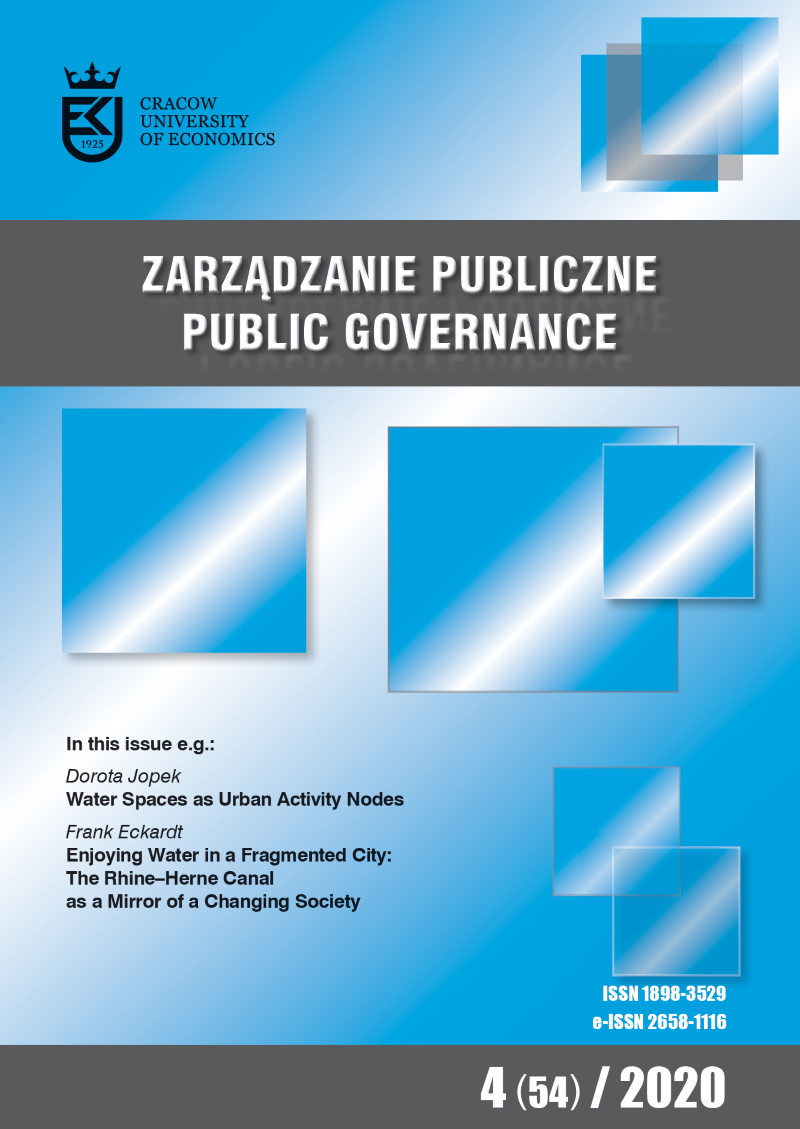Water Spaces as Urban Activity Nodes
Water Spaces as Urban Activity Nodes
Author(s): Joanna JopekSubject(s): Politics / Political Sciences, Social Sciences, Economy, Law, Constitution, Jurisprudence
Published by: Uniwersytet Ekonomiczny w Krakowie we współpracy z Wydawnictwem Naukowym Scholar
Summary/Abstract: Objectives: In the contemporary cities there are two main development challenges. The first one is related to changes in residents’ lifestyle (e.g. social and physical activity). The second one is associated with those aspects of climate change which have severe consequences for the city dwellers’ safety and comfort. The conducted analysis determines the potential of particular forms of water areas and their development in creating local centres – nodes of activity. Research Design & Methods: The subject of the conducted scientific research was the water areas of Cracow. Fragments of the Vistula waterfronts were selected as an example of a linear element, and water reservoirs were chosen as surface elements. The study is based on observations and interviews conducted during field visits. Findings: The analysis of Cracow’s water spaces has shown that not all of them can create activity nodes, which is mainly due to particular areas’ high seasonality of use. The city’s natural areas’ development and use must be carried out with full respect for their natural values. The nodes of urban activity should not be identified only with the flagship public spaces of the city, such as the main squares and parks. These places should be created throughout the entire city, with access to all city residents, i.e. those living in more or less populated areas. Such spaces may be different in their spatial form, but should have a common denominator, namely social integration. Implications / Recommendations: The article suggests that the potential of creating nodes is related to a specific place’s multi-functionality, its influence range, and its ability to generate users’ activity. The urban nodes’ polycentric system needs to be considered during the development planning. The system’s main aim should be to integrate all city areas by means of a communication network that would be of good quality and quantity. Contribution / Value added: The presented approach opens up possibilities for analysing urban connections and functionality. Keywords: urban nodes, blue-green infrastructure, public spaces, waterfronts Article classification: research article JEL classification: Y80
Journal: Zarządzanie Publiczne
- Issue Year: 2020
- Issue No: 54
- Page Range: 53-66
- Page Count: 14
- Language: English
- Content File-PDF

